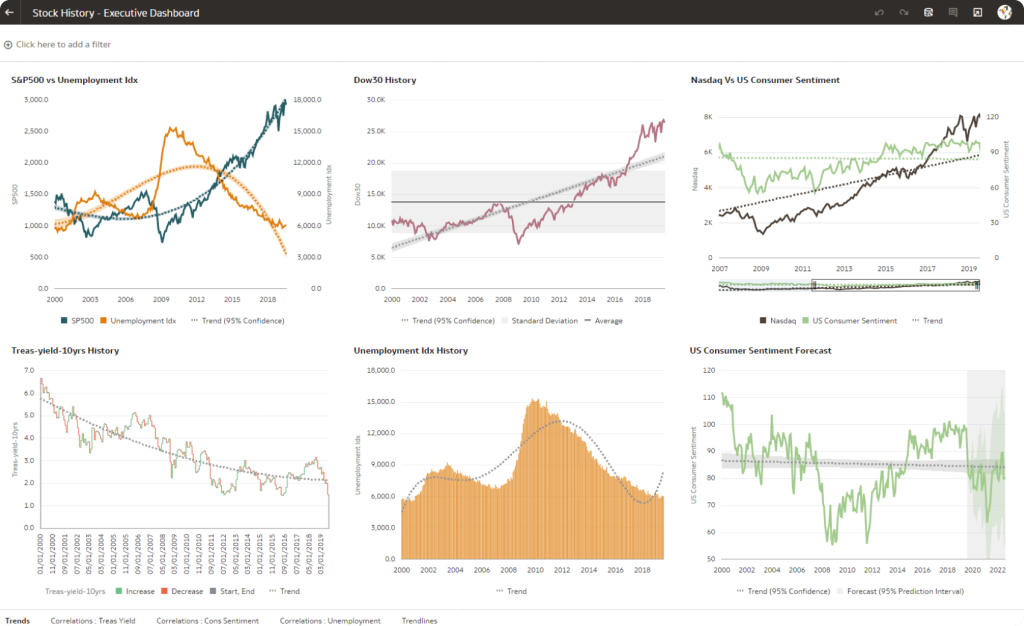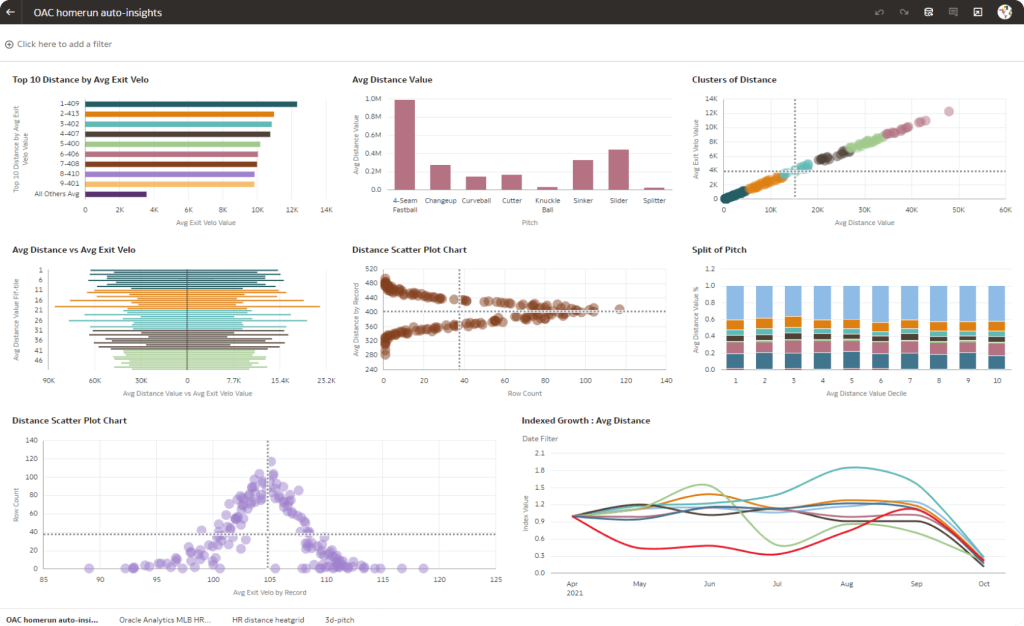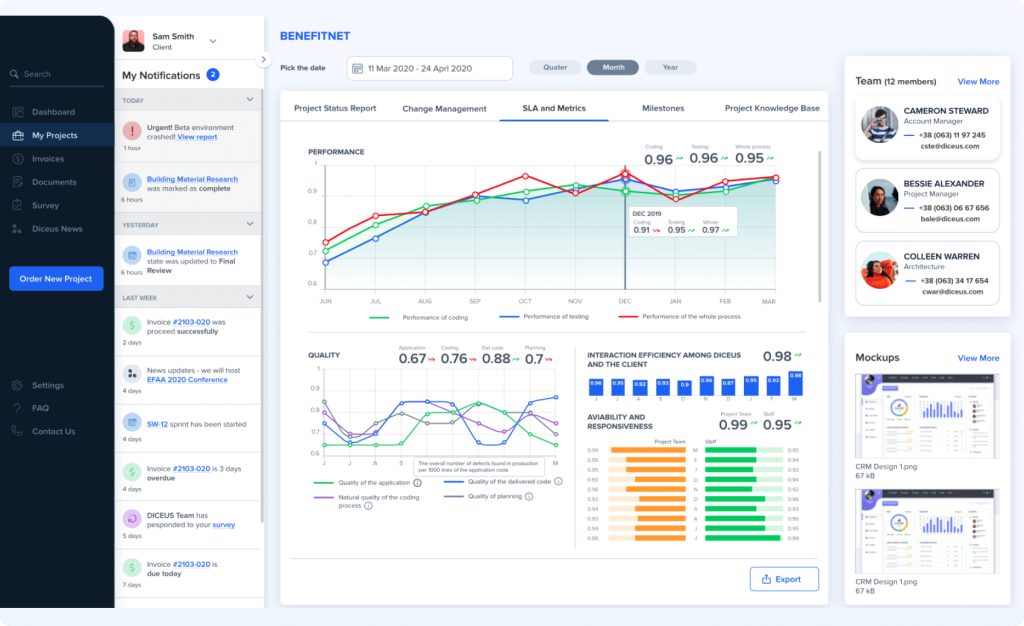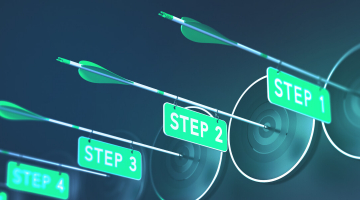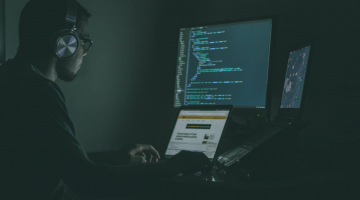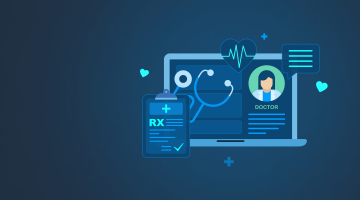
Enterprise software development: Full process
Every business, market, or industry has two sides—the provider and the consumer. Without the other, one cannot exist, and we don’t even want to start speculating who came first. What’s intriguing is that modern service and product providers also serve as typical IT consumers. They become clients seeking suitable enterprise solutions for their own needs.
Enterprise software is the backbone of digitized workflows and experiences managed and delivered by all sorts of businesses. It sets modern providers’ operations in motion, which sets it apart from traditional software solutions for general use. How exactly? Let’s delve into the subject of enterprise software development to gain a better understanding.
Before you proceed, you might be interested to learn more about our services:
Enterprise software development services from DICEUS
What is an enterprise software product?
Why do we need enterprise-grade software? We use it to complete many jobs. From simple means of communication and file sharing to daily management, tasking, and administration. But all these tasks have one thing in common. They are focused on enabling, supporting, and optimizing workflows in companies. We are talking about any enterprise that needs to collaborate efficiently between employees.
Digital enterprise solutions are the firm part of any up-to-date business or public/private establishment. These make specialists’ lives easier in the following ways:
- Automating various tasks (from data gathering to task tracking, reporting, etc.)
- Putting all the important work stuff in one place (centralized management)
- Keeping a much better track record of the overall performance (via tasking and analytics tools, overviews and statistics, etc.)
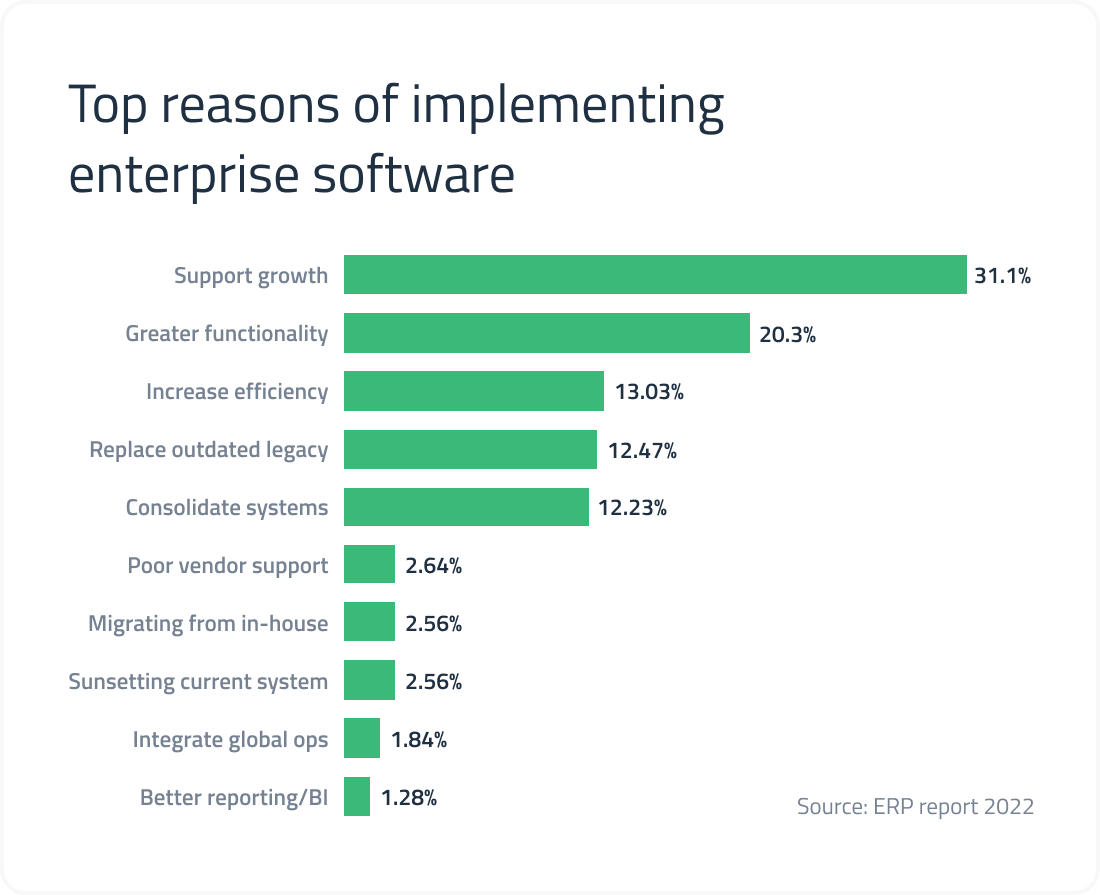
The difference between enterprise software development and regular software development
To a layman, the development of any high-tech product is essentially the same process, no matter what solution is viewed as the major deliverable. But for such a seasoned IT vendor as DICEUS that has expertise both in enterprise software development and regular custom software development, these are completely different pairs of shoes.
Enterprise software development
The overarching goal of such endeavor lies in the necessity of offering a number of extra features and specialized tools destined especially for corporate and facility workflows. These may include many things that only a respective employee can use. This is because the end consumer of an enterprise software product is an organization, whereas an individual user is the end consumer of general-use software.
Moreover, the number of business software users is much smaller since it is supposed to service only the organization’s employees with versatile roles and responsibilities, allowing them to accomplish their shop floor tasks. Yet, the feature roster of such solutions is longer because each department and even each worker has unique functions as a part of the complex enterprise mechanism.
Regular software development
Unlike enterprise software, regular solutions are mostly generic. They don’t have such a narrow focus and target audience, being developed to suit all and sundry. They are installed on personal devices and operated solely by average consumers whose professional duties are of no importance. Examples of regular software products include entertainment apps, educational solutions, and communication tools.
Since the end users are removed from the creation of regular software, they don’t influence the development process directly through their feedback. It is the developers who make crucial decisions concerning the feature list, design peculiarities, and devising UX.
These two categories of software are aimed at different ultimate goals and tailored to absolutely dissimilar environments. That is reflected in their development philosophies and methods, as well. For one thing, whereas common-purpose apps and programs are usually made as a single wholesome solution, enterprise products are always open-ended (for integrations, connections, etc.). But let’s take a more detailed look.
Common software products vs. enterprise systems
| Aspects that differ | Normal software | Enterprise system |
|---|---|---|
| Architecture | Your regular messenger or fitness tracking app’s architecture can be simple and universal, even templated in many common cases. You have your basic functionality (usually focused on one certain goal, e.g., transfer messages or track sports progress), maybe some extended functionality or privileges that come at a premium (e.g., more in-depth tools or removed ads), and basic social media integrations (e.g., Facebook and Instagram buttons for fast sign-up and content sharing). Such software can be lightweight and mass-produced for the broadest target audiences of users. | Enterprise products are usually more multi-faceted and require a more fragmented and extendable structure that can be efficiently integrated and interconnected with a range of tools and systems already used by an enterprise. At the same time, the architecture here must be scalable to modernize and optimize it in accordance with growing in-house capacities and needs (staff expansion, merging with other branches, etc.). Business apps, tools, and systems are usually designed for a specific line of operations and are mostly custom solutions, making them more complex and resource-intensive to develop. |
| Security | The extent of security measures is dictated by how much sensitive user information the app collects. But it usually doesn’t go beyond two-factor authentication to prevent unauthorized access, some captcha to ensure you are not a bot, and occasional suspicious activity alerts (which is commonly more than enough for general-purpose apps). | A data leak or system breach allowed by an enterprise app is a huge risk that may potentially tear down the whole organization. That is why such solutions must get more attention cybersecurity-wise, getting equipped with multi-layered (sometimes smart) protection mechanisms, user roles for segmented data access, limited user sessions with time-outs that prevent automated bot attacks, powerful firewalls, and even blockchain and cloud solutions for data decentralization and remote storing. |
| Performance | Performance requirements may vary significantly depending on the particular type of app. Most commonly, though, a regular software solution is optimized for the specific operating environment—its target platform. Either two to three separate versions of the app may be created to fit today’s main platforms or a cross-platform solution that works across them all at once. The development and optimization guidelines here are universal and well-explored by the community. | A common requirement for enterprise apps is equally smooth performance across multiple platforms and devices so that employees can flexibly use it, getting access to important work information and communication at all times. Typically, this entails having a specialized software solution that is easily accessible for use on iPhones and iPads, Android devices, Windows desktops, and tablets, and compatible with both mobile and desktop browsers. This makes performance optimization more complex and pinpointed. |
| Format | The general format of a common-purpose software solution may also vary widely (from sports and health care to readers, games, social apps, etc.), but that’s only on the secondary level. First and foremost, these applications are familiar and accessible to the mass user audience. People of almost all ages know how to download and install them. | CRM, ERP, PaaS, IaaS, SaaS—apart from traditionally looking apps, enterprises often require specialized systems and platforms for managing various workflows, storing and classifying sensitive information, and providing innovative automated opportunities for different lines of work. This, again, means a more complex approach to enterprise software design and development. |
| Costs | Today, you don’t even have to possess a single programmer’s skill in order to build and launch an app of some sort. There are tons of templated editors and tools that allow you to drag and drop the required elements within an easily customized interface. And you can even do that absolutely free of charge. Yes, surely, market-defining, premium quality solutions will require respective funds to create, especially if they are targeted at commercial distribution. | Enterprise software, especially custom software, requires substantial investments to cover a range of services, efforts, and tasks. To this end, organizations usually dedicate a separate pool of costs that are calculated based on a number of development team collaboration specifics and underlying factors (such as the time it takes to create a solution, required expertise and tools, type of team working on it, the complexity of architecture, etc.). |
As you can see, there are essential differences all across the board. Those mostly concern the scope of work, responsibility, and resources required to build the two types of software in the discussion.
Although the situation may change from instance to instance, regular apps are mostly easier and cheaper to build. They may tackle a range of everyday, entertainment, or even commercial purposes, and they don’t pose the strictest security and performance requirements.
On the other hand, enterprise solutions are usually custom (or customized) complex software architectures that heavily focus on corporate organizational tasks. They must demonstrate high performance and firm cybersecurity protection, calling for more development effort and higher costs.
Related article:
Enterprise mobile application development: A detailed guide
5 enterprise software development examples
Common enterprise software engineering may take various forms depending on which business organization aspects it is dedicated to. A business can streamline project management, marketing, and customer relations with the help of big all-in-one systems or a bunch of interconnected solutions that form a system of their own (which expands according to the business capacities in hand).
Let’s review five instances of solutions that most businesses employ today.
Example 1: Project management and tasking
Monitoring workflow performance and tracking individual results across employees, departments, and branches is an enormously responsible, difficult task. Without proper tools, getting the big picture and analyzing enterprise aspects is impossible.
Specialized project management and tasking solutions help centralize all the management routines, segment tasks, and autonomously register all the work set to do, in process, and done. Such solutions usually have tracking and reporting features that make every PM’s life much easier. Prominent, commonly used real-life examples are as follows:
- Zoho Projects — a well-tried-and-tested platform with dozens of management and performance analytics tools for efficient tasking gathered in one place, part of a bigger Zoho CRM system.
- Trello — a convenient project management system with an easy-to-grasp interface based on visualized boards.
- Teamwork — a platform for task planning and management with hassle-free drag-and-drop functionality
Example 2: Customer Relationships Management
These systems store commercial organization and planning, constantly acquired customer data, customer communication, upsell/cross-sell, and other marketing opportunities all in one place.
This enterprise software is essentially an all-around equipped contact list that automates lots of customer interactions that a human specialist would otherwise have to handle manually, only to get swamped with the unnecessary routine and seriously underperform. Some of the most widely used CRM solutions today are the following:
- Salesforce is an enormously popular CRM that offers advanced opportunities, such as cloud storage connections, and constantly expands its functionality.
- Oracle is an advanced managed database that streamlines data acquisition, tracking, and management for organizations of all sizes.
- Zoho — an extensive CRM platform that helps businesses efficiently scale by involving more offered tools and opportunities in growing workflows.
Example 3: Enterprise Resource Planning (ERP)
ERPs help organize all the internal processes enterprises need to run and manage. These may include accounting, supply chain management, risk compliance, procurement, inventory, etc.
ERPs are usually integrated with bigger CRM systems and management dashboards to achieve thorough, transparent workflows both internally and externally. Today’s market’s best ERP examples are as follows:
- SAP — a complex ERP platform with in-depth, insightful analytics delivered via various advanced tools and features.
- Oracle NetSuite — an enterprise-boosting suite of tools for in-house management by Oracle.
- Sage Business Cloud — a prominent system that’s tied around a flexible client-dedicated cloud environment.
Example 4: Business Intelligence (BI)
Business Intelligence platforms make data gathering and analytics a separate item of focus, providing an in-depth grasp on all the business data and analytical insights that may show organizations the most efficient decision-making directions.
And rightly so, as data is the cornerstone of and the most valuable resource for any type of business today.
Some of the prominent market examples include the following software products:
- Microsoft Power BI is proven and loved for its extensive functionality as a desktop tool for visualizing and analyzing data.
- Domo — a cloud-powered suite of data analytics dashboards and accessible tools.
- MicroStrategy is an enterprise BI platform that works equally well across industries, digitizing workflows throughout.
Related article: BI implementation: A step-by-step guide
Example 5: Marketing automation
Lastly, there’s marketing, which is an essential driver of any business following all the internal management, communication, and interaction aspects. Keeping up with today’s market pace is impossible without automating marketing routines.
Marketing automation tools help boost tasks from lead data gathering and email marketing newsletter to sales alignment, conversion rates analysis, and reporting.
Here are the top marketing automation solutions available today:
- Marketo — offers extensive opportunities for boosting sales through email campaign management and more.
- Hubspot is a proven tool for creating efficient automated marketing campaigns.
- Pardot — packs a range of marketing opportunities, from smart lead generation to customized cloud account engagement.
All these professional solutions are geared towards various purposes, however, all of them must possess some common characteristics to live up to companies’ expectations.
Common features of enterprise software
Having delivered dozens of enterprise products, we at DICEUS know the non-negotiable requirements for such solutions.
- Scalability. Every organization is poised for future growth, and the software it utilizes in its pipeline activities should be ready to follow suit. It must be built to take the increases in data, users, and workloads in their stride and allow for upgrading and switching over to a larger IT environment.
- Data security. Cyber threats are the top concerns for organizations across all industries. Data leakages and security breaches will cost companies $9.5 trillion this year, and the sum is likely to grow. To keep their sensitive financial and business data (and the data of their clients) intact, enterprise software development should adopt a security-first approach. Also, software compliance is a must, especially in finance-related domains (banking, insurance, and the like).
- User-friendly interface. Many companies would like to see many disruptive technologies and cutting-edge capabilities in their professional products. However, the chase for innovation shouldn’t result in a cluttered and hard-to-navigate UI. It must be foolproof in embracing and have a single sign-on capability to rule out the necessity for remembering multiple passwords.
- Third-party integrations. Conventionally, enterprise solutions are never built to function as standalone products. They operate as part of a comprehensive business environment, which requires the ability to play well with other elements of the enterprise ecosystem. Their developers should devise a network of robust APIs to envisage multiple integration opportunities.
- Cloud compatibility. Legacy on-premises solutions are doomed to extinction, giving way to cloud-powered software. Cloud deployment is a must for any contemporary enterprise solution, which is why its creators should design software architecture and data dependencies to make professional products compatible with cloud platforms and infrastructure.
The implementation of these characteristics is conditioned by the type of enterprise software you are building.
Types of enterprise software development
While enterprise software developers can create systems that target any existing device and operating system, mobile and web solutions are in favor here. Desktop applications cannot provide the required flexibility for employees who need to be ready to work remotely, make important business decisions on the go, and have constant access to important data. As a common solution to those requirements, bigger desktop systems usually get connected to mobile and web versions.
Mobile
Creating a mobile app for enterprise purposes is a great convenience booster for employees, allowing them to stay in tune with the work situation at all times. Such apps usually target instant communication, file sharing, and workplace check-ups. However, it is important to consider that you can hardly stuff a mobile app with full-blown CRM functionality. This is why it should serve more as an assisting tool rather than the main business organization hub. Leave that to a web-based solution as an option.
Web
Everybody has a browser and knows how to use it, which makes it a great, readily accessible environment for digitized workflows. Setting up and managing whole digital offices in browsers has become a well-tried, widespread practice, especially since the COVID-19 pandemic hit remote working conditions requirements worldwide. Many enterprises’ main workflows and even headquarters are centralized in Jira, Slack, or similar digital workplaces today.
More information on the topic:
Leveraging enterprise data warehouse to facilitate your business efficiency
How to develop software
No matter what type of enterprise software solution you are building, you should be careful to overcome some pitfalls you will meet in this way.
Challenges of custom enterprise software development made plain
As a vetted enterprise software development company, DICEUS realizes well the major problems IT specialists typically face during the SDLC and enterprise software implementation.
- Shifting business requirements. Despite the originally approved and agreed upon plan, sometimes the customer reconsiders some aspects (or even several aspects) of the future project and introduces corrections into them. Such alterations don’t only affect the budget, deadlines, the development team’s motivation, and overall efficiency. They initiate a whole complex of other adjustments and transformations since all elements of the product to be built are interrelated and interdependent. And if such a requirement crawl happens late into the project, even a minor change calls for a major overhauling of the entire solution.
- Enterprise IT software scalability and flexibility. The global pandemic has taught enterprises one important lesson: they should always be ready both for upscaling and downsizing on demand. Naturally, the organization’s software environment should allow for upgrading, adding new modules, and growing in scope or removing some functionalities and putting some processes that are currently not needed on standby. Such capabilities should be envisaged by developers at the stage of architecture design.
- Proper data analysis and storage. The larger an enterprise is, the more data it generates, processes, and hoards. Professional solutions should be created with an eye to the ability of the personnel to access and retrieve the necessary information on short notice and fit it into a wider picture, thus turning it into actionable insight. Alongside the sheer amount of data to tackle, another problem for software developers is its unstructured nature, which calls for peculiar methods and techniques of enterprise software creation.
- Enhanced security. Organizations often work with sensitive or personal information that needs protection from unauthorized access or cyber-attacks. Moreover, in some industries (such as healthcare, finance, or banking), there are stringent legal norms enterprises must comply with. That is why security is mission-critical for enterprise solutions and requires a security-first approach the development team must adopt in the SDLC.
- Integration capabilities. Many enterprises still rely on the monolithic software that was created decades ago and doesn’t play well with novel technologies (AI, cloud, blockchain, and more) and third-party systems. The contemporary digital landscape abounds in. If this is your story, you should start not with developing new enterprise solutions but with monolith-to-microservices migration and other upgrading measures to ensure your IT infrastructure’s compatibility with cutting-edge know-how.
- User experience. Historically, UI/UX design wasn’t a top priority for enterprise solutions. However, employees are also users whose experience isn’t a thing to be neglected. The UI of such products should be intuitive, user-friendly, and uncluttered, containing only the features necessary for performing pipeline tasks. In this way, you will provide a seamless UX for the personnel working with it, flatten their learning curve, and accelerate the solution’s onboarding across the organization.
- Departmental silos. It is relevant for large businesses with numerous departments employing the same enterprise software. Their competing demands and inadequate communication can hamstring the product’s usage scope and efficiency. Such issues should be forestalled in the planning phase. Software developers and customer representatives should ensure equal participation of all stakeholders in formulating their requirements for the future product and voicing their concerns regarding its functioning.
- Finding qualified specialists. The present-day IT outsourcing market is oversaturated with companies offering their services to all and sundry. However, hiring a reliable and competent vendor with in-depth expertise in the niche you work in is still a tall order for many digitally driven enterprises. With its 13 years of experience in delivering enterprise solutions, DICEUS ticks all these boxes and can develop a professional product of any scope and complexity within the allocated time and budget.
Let’s discover other ingredients vital for the successful creation of an enterprise solution.
Enterprise software development tech stack and team
The enterprise software development life cycle is quite effort-consuming. It requires proper tools, expertise to wield them, and a phased approach. Essential development stages may vary from project to project, but the basic stages and respective requirements to lay a sturdy digital product foundation remain the same. Let’s take a look at each of those below. But first, let’s figure out the main project roles that should be involved in the process.
Team
- Project Manager — first and foremost, somebody has to keep the project on schedule, manage milestones and deliverables, and coordinate the development progress.
- Business Analyst — a specialist who helps identify the main business aspects to be addressed, translate needs and goals into features, and organize business intelligence.
- System Architect — a specialist with in-depth knowledge of digital structures to design the product architecture and infrastructure and watch over integration possibilities.
- UI/UX Designers — designers responsible for the research, creation, and implementation of enterprise software design, user interface, and user experience, which are major software aspects.
- Backend and Frontend Enterprise Developers — software engineers who work on developing internal (backend) code structures and user interface functionality.
- QA engineers — quality assurance professionals who ensure the designed and developed architecture is smooth and error-free via various tests and debugging tasks.
- DevOps Engineer — a dedicated DevOps specialist who aligns the actual process of implementing development tasks, bridging the gap between management and technical production.
Also, enterprise software engineers need relevant tools to implement project phases and build the solution, which forms a project tech stack. It may vary a lot as well, but while such frameworks for complex software development as .NET, Ruby on Rails, and Flutter are interchangeable choices, there are “golden standards” in the field to make your life easier.
Tools
Backend
- Express as a web framework
- Node.js as a runtime environment
Frontend
- HTML/CSS for markup and styling
- JavaScript for scripting
- Angular.js or React as a web framework
Database
- MongoDB
Alternative stack
Back-end
- Express
- Node.js
Front-end
- HTML/CSS
- JavaScript
- React
Databases
- MongoDB
These are similar common tech stacks that differ in terms of the core web framework technology. One has Angular.js, and the other has React. This slight difference may help an enterprise software developer achieve different styles of development life cycles in different conditions. The specialists make the final choice after detailed project discovery.
This basic tech stack should be enough. Of course, a number of other tools will be required as well, but that is dictated particularly by the format of the application in work and specialists working on it.
Want to learn more about product discovery?
Explore our discovery phase
Enterprise software development stages
Now, let’s review the enterprise software development process.
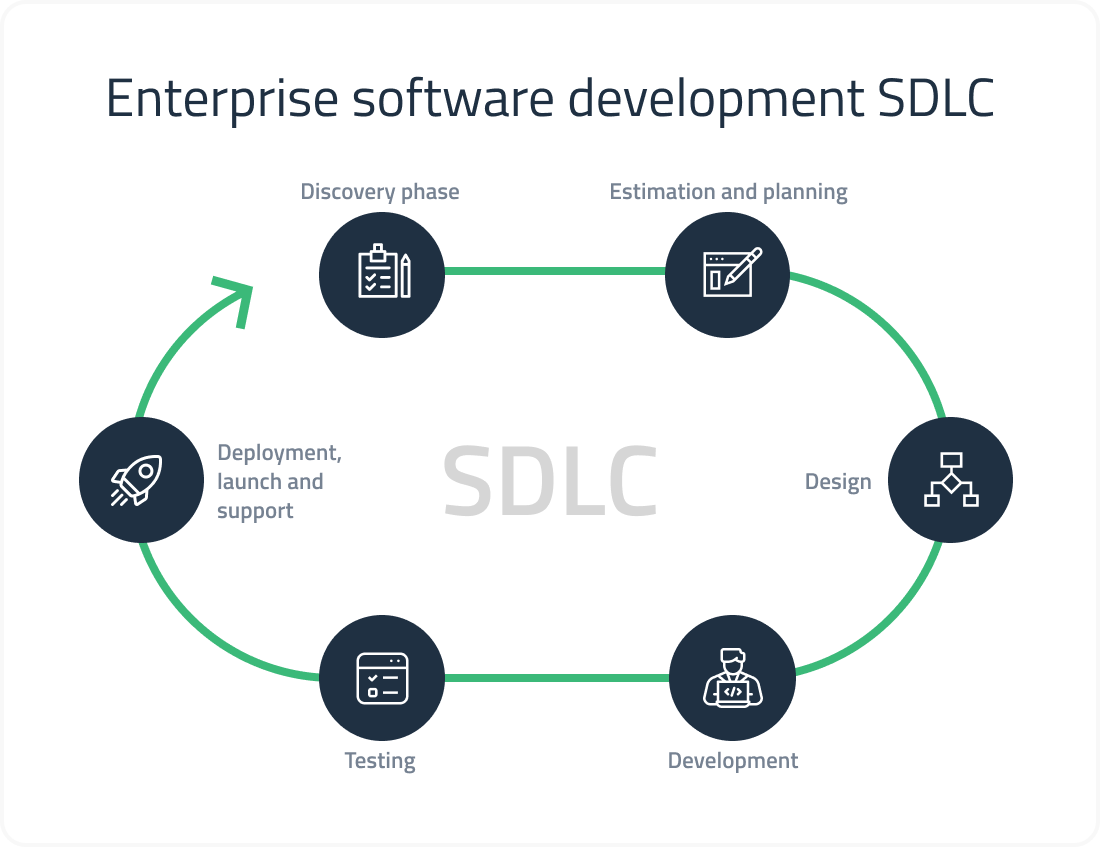
Stage 1: Discovery phase
First off, the underlying organization goals and needs are analyzed, requirements are gathered and structured (all stakeholders must be involved at this stage), and the big picture of the project is elaborated. A Project Manager (PM) and a Business Analyst (BA) are the specialists who work most during this phase.
Stage 2: Estimation and planning
During this stage, the team outlines the project roadmap, indicating all the goals, deadlines, scope of budget and tasks, and other aspects. At this stage, a PM, a BA, and a Project Owner (and/or stakeholders) continue to join forces, researching the market environment, competitive solutions, and underlying project aspects. These efforts often result in an early MVP version of the future product.
Stage 3: Enterprise software design and prototyping
Based on the roadmap and all the gathered outlines, the System Architect starts creating the software architecture. The main guideline here is to consider the end user’s perspective; it’s the ultimate way to achieve usability. Prototyping usually helps with this.
Stage 4: Development
The most technically complex part is when developers start filling up the “architecture carcass” with functional “meat” — features and elements that set things in motion. A backend developer is the first to contribute and implement the internal functionality, including usability logic, APIs, databases, server functionality, and other fundamental parts.
In addition, the front-end developer builds features that users will access after the product is finished. Usually, developers use a combination of HTML/CSS and JavaScript to assemble the graphic design and user interface.
You might be interested in learning more about the differences between enterprise vs. solution vs. technical architects.
Stage 5: Testing
This is the stage where quality assurance specialists come into play, implementing functional, load, unit, performance, security, and compatibility testing. This is an integral part of the development project. Engineers polish the product and prepare it for the final release. Repeated bug-fixing iterations, combined with automated and manual testing, take place to make sure everything is exactly in its place.
Next stages: Deployment, launch, and support
Proper deployment of the product is also very important. If it is a mobile application, upload it into the compatible marketplace. If it is a web solution, it must be fine-tuned to run across different browsers. Once the solution is launched, further support is required to improve the product further based on CX and feedback.
What is the cost of enterprise systems development?
The final cost of development is the most difficult question to clarify. It depends on a myriad of underlying factors and specifics, including the scope of work, architecture complexity, presence of advanced features, tech stack, and size of the team.
Other factors that can drive the cost of an enterprise solution include the necessity for various software add-ins, upgrades of existing elements of the IT infrastructure, and the introduction of technological innovations (AI, ML, IoT, and more). Besides, organizations should allocate extra budget for implementing the new software and training personnel working with it. A special expenditure item is the cost of regularly maintaining the enterprise ecosystem as a whole and its components.
Add the conditions of collaboration with a hired development team to that, and you’ll get a rough estimation. The development process may shift and change forms after the project kick-off, making budgeting all the more difficult to handle.
So, instead of giving you the roughest statistical estimation of $75,000-$750,000, we would recommend contacting a professional agency for a consultation and approximate estimation based on some particular ideation and project outline.
Learn more about this theme:
ERP software development: How to build a custom solution
DICEUS expertise in enterprise software development
At DICEUS, we possess 13 years of enterprise software creation experience, delivering projects of various formats, complexity, and applicability for startups, SMEs, and big-size businesses, facilities, and organizations across different industries and niches. We can help you with the tasks below:
- Elaborate on your enterprise solution idea
- Recommend a top enterprise software engineer
- Consult you on the major aspects of the future solution
- Point you in the most up-to-date, result-yielding direction
- Help outline the approximate budget
- Gather project requirements during a discovery phase
- Develop the solution’s infrastructure and architecture
- Work on prototyping and project development
- Do many other custom development jobs like system integration, modernization, optimization, etc.
We’ll be glad to discuss your up-and-coming project at any time.
Summary
Developing and launching a new enterprise software development solution is a task to reckon with, but the result is a tailored workflow that provides convenience in all the right places. A custom system is the digital reflection of the enterprise — its workflow philosophy, brand attributes, and style of collaboration. Another good thing to know here is that such systems are always in demand. Just make sure that only experienced professionals take on the creation of one.
FAQ
What is enterprise software development?
Enterprise software development enables the creation of tools, applications, and systems dedicated to an organization’s needs. It helps digitize workflows, which facilitates a lot of work and brings many other benefits, such as centralized communication, automated collaboration, convenient management, monitoring, and reporting.
What are the key components of enterprise software?
The roster of elements an enterprise solution has is conditioned by its type. For ERP systems, the must-have functionalities include HR, accounting and financial management, BI, supply chain management, inventory and warehouse management, plus manufacturing and logistics management. CRM products can’t do without human resource management, sales force automation, business reporting and analytics, workflow management, marketing automation, and customer services. The capabilities of enterprise apps depend on the industry (healthcare, insurance, banking, finance, construction, etc.) and the peculiarities of the organization’s pipeline.
What is enterprise software development technology?
Enterprise or business software development is based on common development tools and languages – from HTML/CSS and JavaScript to .NET, Ruby on Rails, and the rest. Every tech stack is very individual, but there is always a need for tools to build databases and APIs, outline the design “carcass”, develop software architecture backend and frontend, and test all the elements throughout.
What does an enterprise developer do?
Enterprise software engineers design, build, test, and maintain complex systems tailored to meet the specific needs of the enterprise. Their work involves development, integration, architecture, database management, and more.
What is the difference between software development and enterprise software development?
Software development is about creating computer programs and applications for a variety of purposes, ranging from individual use to small businesses. It involves designing, coding, testing, and deploying software to meet specific requirements. On the other hand, enterprise software development focuses on creating applications and systems for large organizations or enterprises. The key difference lies in the scale and complexity of the projects. Enterprise software development deals with larger and more complex solutions requiring integration with existing systems, data management at scale, security measures, and adherence to strict compliance and industry standards.
Which is an example of enterprise software?
In our guide, we mentioned the five most vivid examples of enterprise systems: CRMs, ERPs, marketing solutions, business intelligence, and project management.
What are the benefits of building custom enterprise software?
When opting for a boxed solution, you obtain a garden-variety product built to suit an average company in your niche, which means wasting your money on many features and capabilities you will never use. But if you hire an outsourcer to develop a bespoke solution, you can tailor it to meet your organization’s unique needs and pay only for the functionalities your shop-floor activities require.



